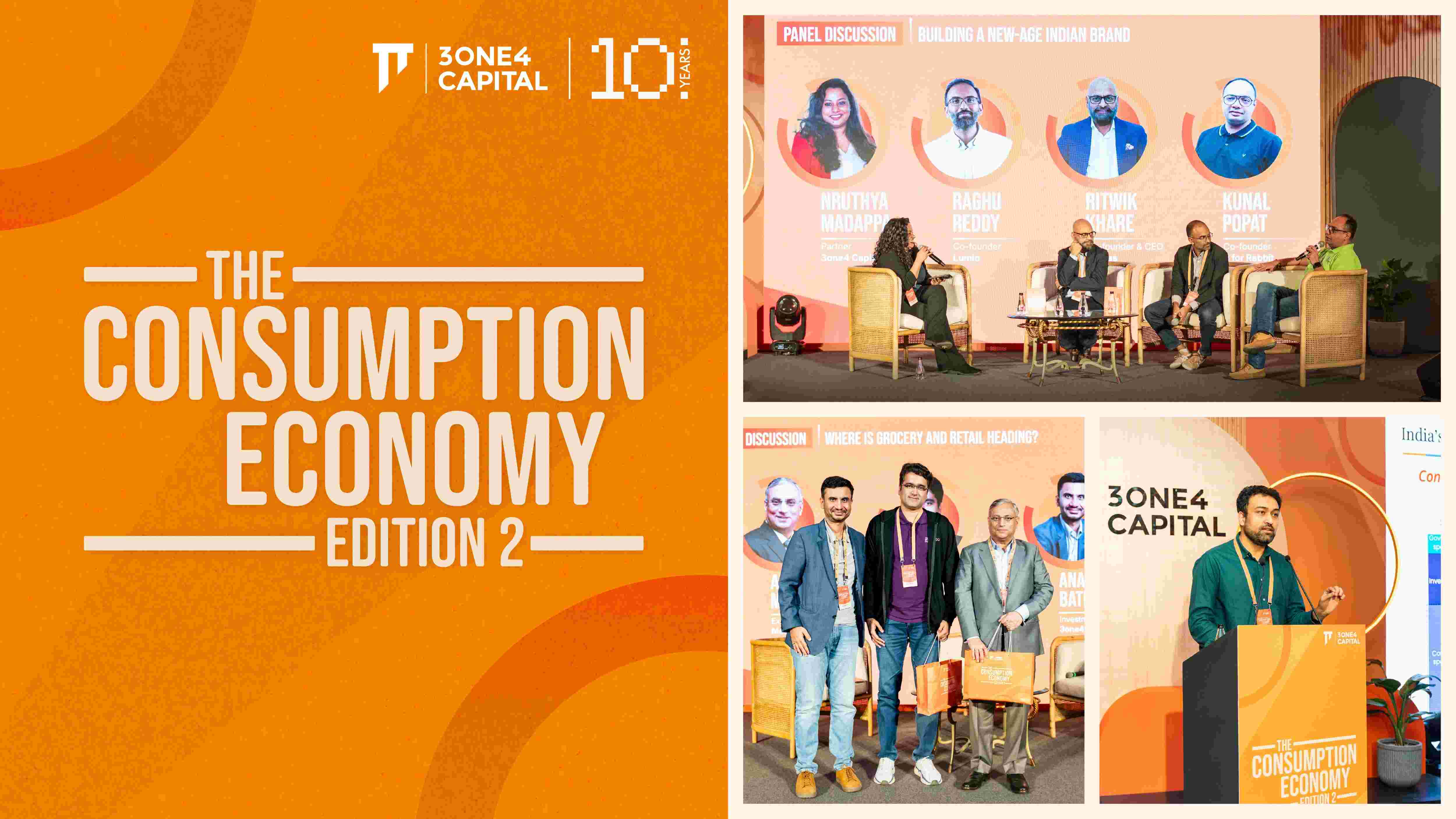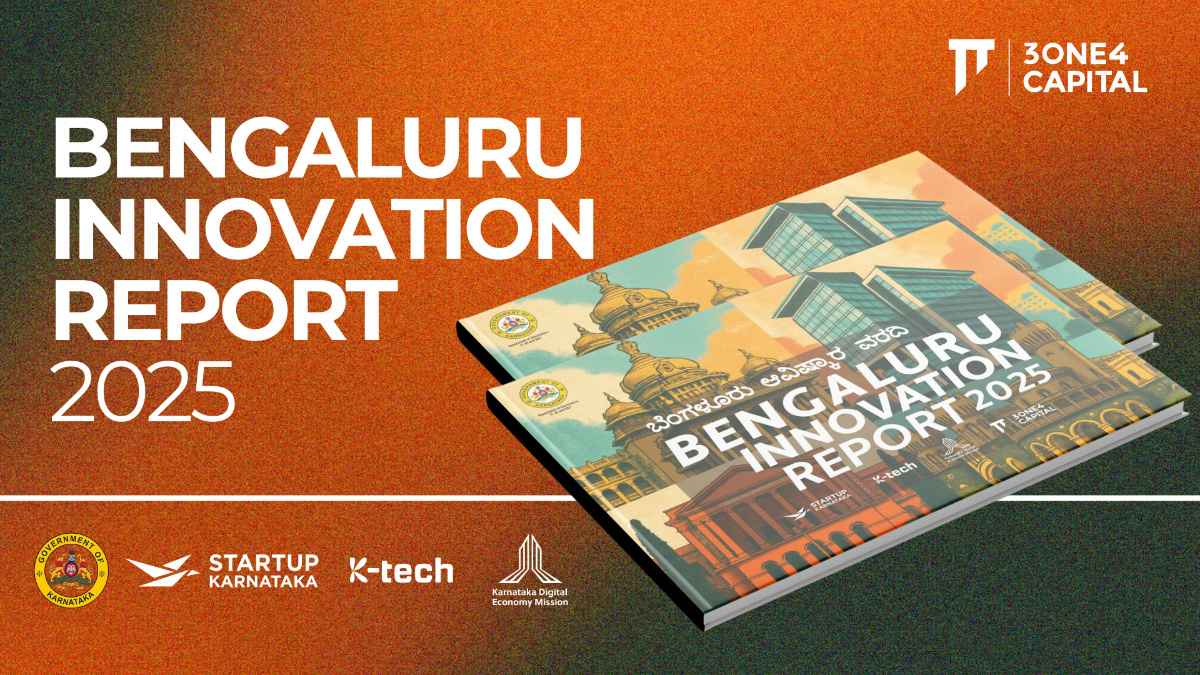
Selling SaaS in the Age of Value and Retention
Amidst the global landscape of software consumption, growth trends on both the supply and demand front. For majority organisations, engineering teams typically use the most number of SaaS apps - an average of 108 applications. Notably, between 2022 and 2023, the highest surge in SaaS application usage was witnessed by IT and security teams, experiencing a 33% increase, predominantly in point solutions and Return on Investment (ROI) tools. In the initial stages of a company's growth, there is a significant reallocation of software expenditures. This allocation stabilises once the employee count reaches 250, remaining consistent in subsequent phases.

Insights from the SaaS Inflation Index report 2024 by Vertice highlights that in 2023 companies spent a substantial $7,900 per employee to SaaS products—an increase of 27% compared to 2022- now a bigger contribution than healthcare.SaaS inflation is 68% higher than that of other products, compared to 22% in 2022.
This is not entirely surprising, as the report discloses a 73% escalation in prices among software vendors, averaging a 12% increase over the past year, with companies like HubSpot and Microsoft increasing their prices by 12% and 15%, respectively. Projections for 2024 indicate an 8.7% increment in expenditure for identical SaaS products utilised in 2023.
The Economics of Software Spend
The increase in software prices was also a factor of the moderation in the growth rates for B2B business in the past years. Growth rates for subscription businesses processing up to $100 million exhibit a plateau, concluding the year with a 14% growth in Q4 2023—a 6% decline from the same period in 2022 (Maxio Institute). This shift prompted a parallel phenomenon—consolidation of SaaS portfolios for the companies.
“Our data demonstrate the path to immediate action for CFOs is to better identify and consolidate SaaS apps, given the cost reduction pressures currently facing every company,” said Jody Shapiro, chief executive officer and co-founder of Productiv. A McKinsey survey of 50 CIOs, overseeing IT spending exceeding $10 billion highlights that 60% of them plan to decrease software-related expenses during a downturn, while 75% anticipate maintaining or reducing spending on new vendors and products. CXOs are tightening restrictions on self-procurement, even in the dev/test environment.
Revolutionising Software Selling
In this landscape constantly shaped by evolving software usage, software sales is undergoing a profound revolution. Changing buyer behaviors, stakeholder dynamics, and an unyielding pursuit of value are steering the industry in unprecedented directions. Let’s delve into the key strategies that are reshaping how software is sold, ensuring businesses stay not just relevant but at the forefront of current consumption trends:
- Redefining Outbound Strategies: The traditional practice of sales reps resorting to the phone book and employing a "spray and pray" strategy is transitioning from traditional methodologies to a nuanced understanding of buyer behavior. Buyers in 2023 are discerning and well-informed, placing a premium on trust and integrity. Consequently, there is a consolidation of vendors amidst a landscape of overlapping offerings. The industry is supporting the shift towards Product-Led Growth. This entails leveraging inbound product sign-ups that transition into loyal customers. In the realm of outbound strategies, especially within a usage-based model, precision is crucial. Software companies now recognise the necessity for a targeted approach, relying heavily on referrals, personal connections, and collaborative efforts led by partners such as agencies, tech partners, and venture capitalists (VCs).
- Managing complexities in Stakeholder Dynamics: In an environment, specifically while selling to larger organisations/enterprises, where numerous stakeholders are engaged - fostering a collaborative approach between Sales Development Representatives (SDRs) and Enterprise Account Executives (AEs) is imperative. This involves providing them with robust pipelines and ensuring consistent one-on-one interactions. The collaborative efforts extend to planning the Go-To-Market (GTM) strategy collectively and identifying top targets together. Though this dynamic has led to extended sales cycle, it yielded a 30% surge in deal throughput, as outlined in a McKinsey report. Sales leaders have realised it is important bringing all relevant parties to the table and orchestrating multiple calls and adopting a strategy of running more condensed sales cycles with individual stakeholders.
- Distinguishing between Leads and Opportunities: Drawing a clear line between lead generation and qualification is becoming pivotal as it directly impacts conversion rates and retention. Conducting a comprehensive funnel analysis—identifying where deals are faltering, understanding the bottlenecks, and scrutinising the reasons behind these challenges. In a Gartner survey, 42% of business leaders indicated that the alignment of sales and marketing led to expedited connections with qualified leads. While Discovery initiates the pipeline by identifying potential interest, qualification delves deeper. In the qualification phase, inquiring about the pain points that need addressing, discerning the value of solving them, and determining the urgency of a solution. This approach has been enhancing the precision and effectiveness of the entire sales process for SaaS companies.
- Identifying Internal Advocates: The pool of individuals who can champion your cause internally has significantly diminished. Those Directors or VPs whom you once regarded as steadfast champions may no longer fulfill that role. The dynamics of power, influence, and orchestrating internal support are evolving. Currently, most of the influence resides with the COO, CEO, or VP of Finance, emphasising the importance of a strategic approach by selecting a high-value use case that promises quick implementation. Extend decision-makers a hands-on experience with the product, allowing them to witness its benefits firsthand. Instead of pitching the entire product, focus on selling a specific use case that is simple and easy to comprehend.
- Elevating Retention Strategies: The dynamics of client retention is under going a transformation. The conventional annual meeting as the minimum benchmark for client engagement has evolved significantly to a more proactive approach, with quarterly or even monthly reviews becoming the norm. In the current business times, there is an expectation to validate ROI swiftly, even within a year. Securing an enterprise customer is only the initial step; the true challenge lies in delivering a sustained enterprise experience. Despite the self-serve nature of the modern software solutions including the integration of AI chatbots; when an executive confronts an issue, they'll need someone to talk to. This highlights the importance of understanding the costs associated with serving enterprises — a commitment that involves team expansion, office expansion, and, essentially, treating this segment as a distinct entity within the business, managing its Profit and Loss (P&L) autonomously like a standalone enterprise.
Growth Stock Investors: Eyeing a New SaaS Flavor
Amidst the uptick in interest rates and escalating capital costs, there's a noteworthy shift in investor sentiment—from a pursuit of "scalable" growth to an emphasis on "sustainable" growth. Software investors, drawing on the industry's resilience in past recessions, are eyeing opportunities to boost their portfolios, aligning with the nuanced demands of the current landscape. Sure, SaaS is riding the AI wave, there’s surge in Vertical SaaS and there’s booming demand for API connections - Investors are on the lookout for opportunities in India and beyond with innovative distribution strategies, poised for some serious growth. It's a hunt for the next big thing in the ever-evolving software landscape.
1. Significance of Net Dollar Retention (NDR): The narrative has pivoted from considering Annual Recurring Revenue (ARR) as the primary metric for sales efficiency. Forget the old-school funnel approach to customer acquisition – in the world of recurring revenue, it's more like a bow tie than a funnel or a pipeline. As companies progress through subsequent funding rounds, the emphasis shifts towards pivotal indicators such as net revenue retention and market share. These metrics assume heightened significance in gauging the sustained success and impact of a SaaS enterprise in the dynamic market landscape.

2. Professional Services Beyond Initial Implementation: This can open up opportunities to unveil Professional Services, including adoption and optimisation services, empowering sales and customer success teams to attach these services beyond the initial deal. Optimisation services (as shown in Fig below) dive into usage data, collaborating with customer teams to enhance product experience, expedite adoption, automate operations, and influence business outcomes. Not only are these services highly profitable, boasting margins of up to 60% at maturity, but they also hold a crucial role in maintaining customer retention and, consequently, enhancing Net Dollar Retention (NDR).

3. Value-based pricing coupled with usage-based revenue models: Unlike subscription, cost-plus or competitor-based strategies, value-based pricing circles around customer-centric valuation. This approach aligns pricing more closely with the distinctive benefits and features provided by the solution. Adopting this strategy that involves charging clients based on both software usage and the value delivered necessitates a comprehensive understanding of the customer's business outcomes. Achieving success with value-based pricing requires commitment, necessitating alignment and seamless collaboration among sales, growth, customer success, product development, finance, and marketing teams. For companies with less than $1M in ARR, employing a subscription invoicing model tends to yield better success than relying solely on usage-based pricing. This trend was evident in Q4 2023, as companies utilising subscription invoicing experienced an annualised growth of 33%, outpacing their consumption-based counterparts. However, the dynamics change once a company surpasses $1M in ARR. Businesses with consumption-based models and annualised billings exceeding $1M achieved a 22% growth, surpassing their subscription invoicing counterparts by 6% in Q4 2023 (Maxio Institute).

4. Migration to PaaS and Emergence of iPaaS: Looking ahead to 2024, there is a projected migration of SaaS towards the realms of PaaS (Platform as a Service). This development empowers businesses to construct customised applications as extensions to their primary services. Major players such as Salesforce and Box have recently introduced PaaS-centric services, aiming to secure a robust market share in their respective niches. According to the Tropic report, the average company had over 102 SaaS solutions in 2023 (Fig below) - exposing employees to the risk of errors or spending excessive time navigating multiple tools. This scenario poses challenges for businesses that need to extract data from these tools for critical strategic decision-making. In response, Integration Platform as a Service (iPaaS) tools have emerged as significant solutions, focusing on empowering companies to leverage their data to its fullest potential. Projections indicate that the iPaaS industry is expected to reach a noteworthy $10.3 billion by the year 2027.

As the industry undergoes evolution and innovation gains momentum, software alone ceases to be the moat for investors. Instead, what truly distinguishes successful ventures are formidable sales teams, lucrative contracts, unique distribution channels for B2B SaaS, substantial user bases, and robust retention and engagement strategies for consumers. As growth stock investors embark on the pursuit of a new SaaS dimension, the industry promises exciting opportunities in the changing landscape of software sales and adoption.
DISCLAIMER
The views expressed herein are those of the author as of the publication date and are subject to change without notice. Neither the author nor any of the entities under the 3one4 Capital Group have any obligation to update the content. This publications are for informational and educational purposes only and should not be construed as providing any advisory service (including financial, regulatory, or legal). It does not constitute an offer to sell or a solicitation to buy any securities or related financial instruments in any jurisdiction. Readers should perform their own due diligence and consult with relevant advisors before taking any decisions. Any reliance on the information herein is at the reader's own risk, and 3one4 Capital Group assumes no liability for any such reliance.Certain information is based on third-party sources believed to be reliable, but neither the author nor 3one4 Capital Group guarantees its accuracy, recency or completeness. There has been no independent verification of such information or the assumptions on which such information is based, unless expressly mentioned otherwise. References to specific companies, securities, or investment strategies are not endorsements. Unauthorized reproduction, distribution, or use of this document, in whole or in part, is prohibited without prior written consent from the author and/or the 3one4 Capital Group.

.png)












